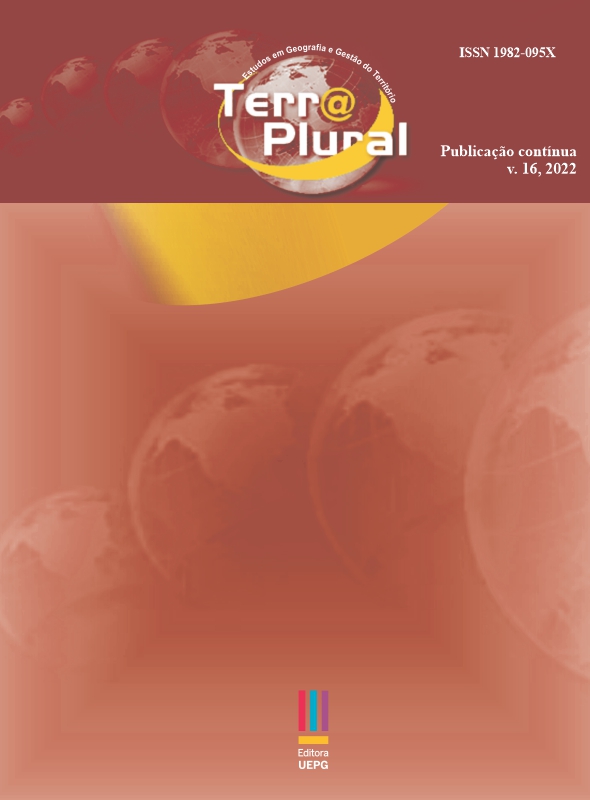Análise fitossociológica do componente arbóreo de três sistemas agroflorestais na Mesorregião Centro Sul Paranaense
DOI:
https://doi.org/10.5212/TerraPlural.v.16.2220627.039Palavras-chave:
fitossociologia, agrofloresta, biodiversidadeResumo
Esse estudo avalia a composição florística e estrutura fitossociológica de três sistemas agroflorestais localizados nos municípios de Laranjeiras do Sul e Rio Bonito do Iguaçu, inseridos no Bioma Mata Atlântica. Foram selecionados os elementos arbóreos
com circunferência a altura do peito (CAP) acima de 10 cm. A análise compreende o histórico de cada área, o manejo adotado e a análise de parâmetros como densidade absoluta e relativa, dominância absoluta e relativa e índice de valor de cobertura, além
da avaliação do status de ameaça de cada espécie. Foram analisadas 456 árvores que integram 52 espécies, 44 gêneros e 24 famílias. Todas as agroflorestas apresentaram boa
representatividade em números de indivíduos e espécies, comprovando a eficiência das áreas manejadas na compatibilização entre produção de alimentos e conservação da biodiversidade nativa.
Downloads
Downloads
Publicado
Como Citar
Edição
Seção
Licença
Copyright (c) 2022 Anderson Gibathe

Este trabalho está licenciado sob uma licença Creative Commons Attribution-NonCommercial-NoDerivatives 4.0 International License.
Os autores mantêm os direitos autorais e concedem à revista o direito de primeira publicação, que permite o compartilhamento do trabalho com reconhecimento da sua autoria e publicação inicial nesta revista. Os autores autorizam a distribuição para indexadores e repositórios institucionais, com reconhecimento da sua autoria e publicação inicial nesta revista. Autores são estimulados a distribuir a versão on line do artigo (por exemplo, em repositórios institucionais ou em sua página pessoal), considerando que isso pode gerar alterações produtivas, bem como aumentar o impacto e as citações do artigo publicado.

Este obra está licenciado com uma Licença Creative Commons Atribuição 4.0 Internacional.















